How Much Does a Company’s Reputation Matter in Recruiting?
When it comes to reputation and the war for talent, there is every indication that one size does not fit all.
Topics
McKinsey & Company claims to have coined the term “the war for talent” in 1997.1 The idea still resonates with managers because it reflects the fact that talented people are a critical driver of corporate success. For those involved in this “war,” the search continues for fresh ideas about: (a) how to make a company more attractive to a larger pool of potential employees, (b) how to make the recruiting process more appealing to job candidates, (c) what mix of organizational and job attributes will attract talented people, (d) how to develop more talented managers, and (e) how to design an attractive workplace environment that retains such people. Aspects of a company’s reputation have been shown to positively affect (a), (c) and (e).2 The social aspect of this reputation — one of the many manifestations of corporate social responsibility — is increasingly appearing on the agendas of many senior management teams, specifically because of its perceived role in influencing key stakeholders, particularly employees.3
To better understand these issues, academics and consultants routinely conduct surveys of talented employees.4 For example, in 2008 the public relations consultants Hill & Knowlton published “Reputation and the War for Talent,”5 a survey of 527 MBA students in 12 top business schools in the United States, Europe and Asia. The study found that 96% of these students said that reputation was an important factor in their choice of potential employer. A majority also said that career opportunity; corporate culture; compensation and benefits; the quality of the company’s products and services; its financial performance; growth potential; corporate governance; and ethics were also important.
Recently, the idea has emerged that the key to winning the talent war through recruitment is to place greater emphasis on the reputation of an organization for social responsibility, not just a company’s overall reputation or its reputation as a good employer.6 For example, consider the following quotation from a global HR consultancy when reporting the findings of its latest survey:7
Major public issues such as a company’s reputation for strong ethical practices have become critical factors in choosing where to work, even to the point where many employees are prepared to sacrifice pay or promotion in order to work for organizations that are actively engaged in good social responsibility practices. More specifically, concerns about ethical behavior outweigh concerns about the environment by all generations, when making employment choices.
Such sentiment suggests that emphasizing a company’s social reputation over more utilitarian factors of a job contract may be the best strategy to win the war for talent.8
We believe that statements like the one above are too simplistic because they are derived from research that does not reflect the complex nature of the decisions that potential employees make about job choices. Few studies validly examine the degree to which social reputation or its counterparts are more or less important than other, more utilitarian job choice factors. Hence, the usefulness of these surveys as a guide for winning the war for talent is limited. In fact, relying on such studies could lead to an unnecessary investment in social reputation building and could also result in faulty human resource recruitment practices.
We make this criticism because the employment opinion surveys used by most consultants and many academics do not require respondents to make the kinds of decisions offered to them in a job choice situation. For example, choosing among job offers requires individuals to trade off more of some factors — such as salary, leave entitlements and travel demands — against less of other factors such as promotion opportunities and pension contributions. In realistic job offer situations, no employer offers the best of everything an employee might demand. When a survey task simply asks people to rate the importance of a laundry list of job attributes, it hides the marginal value of each attribute to the potential employee. Thus, the surveys from which the preceding recommendations were derived fail to take into account adequately the actual decision-making process that a potential employee uses when making his or her job choice.
To substantiate our criticism, we report on three job choice studies we undertook — one with a sample of MBA students, the second with white-collar office workers and the third with workers from a mixture of occupations (legal, medical, government/public service and manual labor). Here we systematically analyze the way potential and actual employees make choices involving job contracts with various utilitarian and reputation components. What this allows us to do is calibrate the relative importance of three types of reputation against more basic aspects of workplace terms and conditions. We do this in a way that provides a dollar estimate of the value of each feature of the job and type of reputation. (See “About the Research” for more details about the study.)
The Role of Reputation
A typical job offer is composed of a mix of features about the job and the employer. For example, reputation is an employer feature that acts to dispel some of the uncertainty and risk associated with various “promises” that are embedded in some job features, such as the opportunity for promotion, access to senior management, a future overseas posting, etc. In this way, an organization’s reputation provides source credibility to many of the features offered in a job contract. Thus, when organizations compete for talented employees by offering similar job features, those with “good” reputations should have a better chance of attracting these people.
Because reputation is a multidimensional construct, we incorporate three different aspects of reputation argued to be important, namely, corporate reputation, workplace reputation and reputation for corporate social responsibility, which we call “social reputation.” Corporate reputation is the overall recognition and respect in which the organization is held. Workplace reputation is the extent to which the organization is seen as a good employer. Social reputation incorporates the degree to which the company is involved with external stakeholders and addresses sustainability issues.
Using three types of reputation in a job choice study serves two purposes. First, it provides reputation with the maximum chance to have some significant effect on making a job offer more attractive to talented employees. Because we are questioning some strongly held beliefs about the role and potency of reputation in the management and HR literatures, we are careful not to mask the potential effects of reputation.
Second, having more than one type of reputation allows us to understand better how these different reputational dimensions are used by potential and current employees to fortify their choices. For example, one or more types of reputation may be used as an initial screening feature such that a potential employer with a poor reputation may be deemed to be unsuitable regardless of what other features are offered. In this case, we expect to find that one or more types of reputation are very important relative to all the other features of the job offer. Alternatively, reputation may play a second-order role, as a factor that helps make a particular job offer more or less attractive than an otherwise similar offer. Finally, reputation may be irrelevant. Here we would observe that across a wide range of job offers no type of reputation really matters. As noted later, the managerial implications for job contract design across these three outcomes are very different.
To control for the fact that the relative importance of job features and types of reputation may vary across different types of people and contexts of their employment, we examined multiple groups of employees. In addition, we accounted for the issue of survey bias discussed earlier by conducting both a standard opinion survey and a detailed experiment where the study participants had to trade off job contract features.
Respondent Demographics
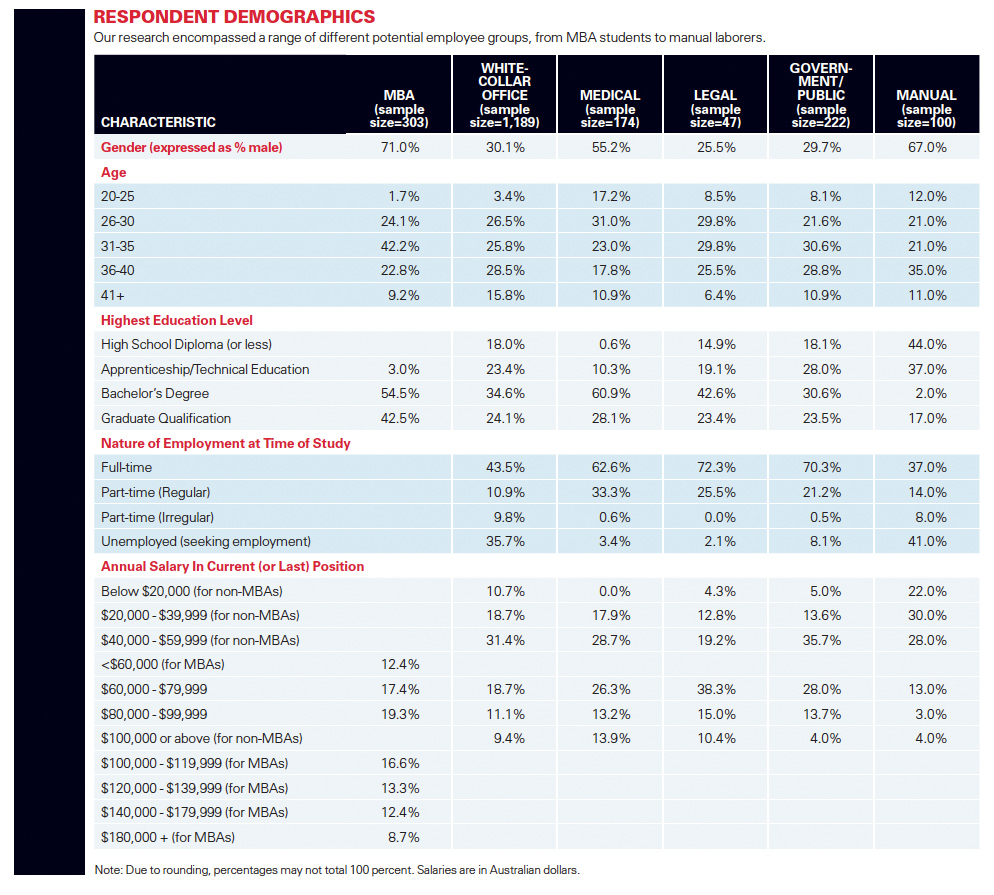
The first study examined how 303 MBA and executive MBA students chose among 16 pairs of experimentally designed job offers. It was conducted by two business school placement services. The second study examined how 1,189 white-collar office workers chose among 16 comparable pairs of experimentally designed job offers. The third study was identical to the second study but examined 543 individuals in other types of occupations (manual labor, legal, medical and government/public service). These last two studies were conducted by a market research organization. Approximately half the white-collar office workers were currently in regular employment and not looking to change jobs, while the other half were in irregular part-time work or unemployed and seeking employment opportunities. About 10 percent of those in the third study were unemployed or seeking to change jobs. In all the studies the participants answered a series of questions on their background. (See “Respondent Demographics.”) They were also asked what they wanted from a job and employer — a survey similar to those discussed at the beginning of this article. They were then asked to choose among pairs of experimentally designed job offers. (See “Sample Hypothetical Contract Choices.”) This exercise used a discrete choice methodology that forces the respondent to make trade-offs across the job features.
Sample Hypothetical Contract Choices
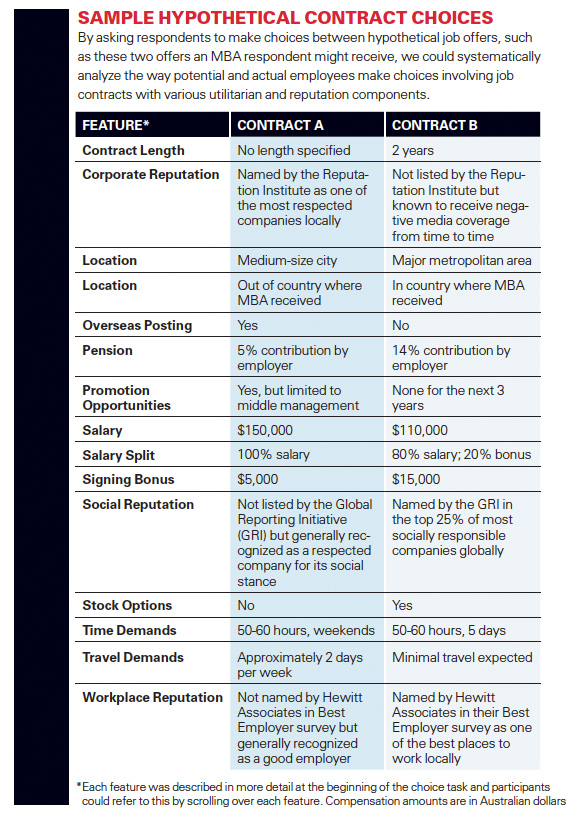
Willingness to Pay for a Good Reputation
Given that our primary focus is on the reputation components of a job offer, it was important that we represent this realistically but not make it identifiable as the reason for the study in the first place. The MBA study was presented as part of the school’s placement program service and all interactions were handled by the placement service. The other two studies were presented as being part of a national study on the terms and conditions of workplace agreements and job demands, and the market research firm handled all interactions with the participants.
The reputation levels we used were extensively pretested, and the certification group represented those on which local companies appeared — Reputation Institute (RI) for corporate reputation, Hewitt Best Employers (HBE) for workplace reputation, and the Global Reporting Initiative (GRI) for social reputation. The levels ranged from (a) top 25% globally and certified, (b) recognized locally and certified, (c) recognized locally but not certified, and (d) having a mixed reputation locally. Such external evaluations of reputation are commonplace.9 The certifying groups and many commentators believe that they play an important role in conferring legitimacy, and many companies actively compete to be in the rated set of companies. Indeed, only 18% of our respondents were unable to identify the reputational standing of their current or prior employer, and 19% were correctly able to identify that RI, GRI or HBE certified their organization as globally or locally high-ranked.
The hypothetical employment contracts presented to participants include specific salary offers, allowing us to estimate each individual participant’s willingness to pay for the components of reputation as well as all the other features of the job offer. These willingness-to-pay estimates are the percentage of the total value of the job offer respondents are willing to sacrifice to get the best of one feature (such as a top-rated corporate reputation) as against the total dollar value of the other features. By forcing people to choose a contract from each of the 16 pairs offered we could examine the degree to which each feature influenced this choice.
We found that there is considerable heterogeneity across the importance of the various job features. (See “The Relative Importance of Various Job Offer Features.”) For MBAs, salary, time demands, salary certainty (in other words, compensation as salary rather than as a mix of salary and bonus) and promotion opportunities account for 55.7% of the value of the contract. For all the non-MBAs considered as one group, salary, time demands and salary certainty account for 52.1% of the value of the contract. For under/unemployed non-MBA workers specifically, time demands, salary, salary certainty, and the need to not relocate account for 61.1% of the value of the contract.
The Relative Importance of Various Job Offer Features
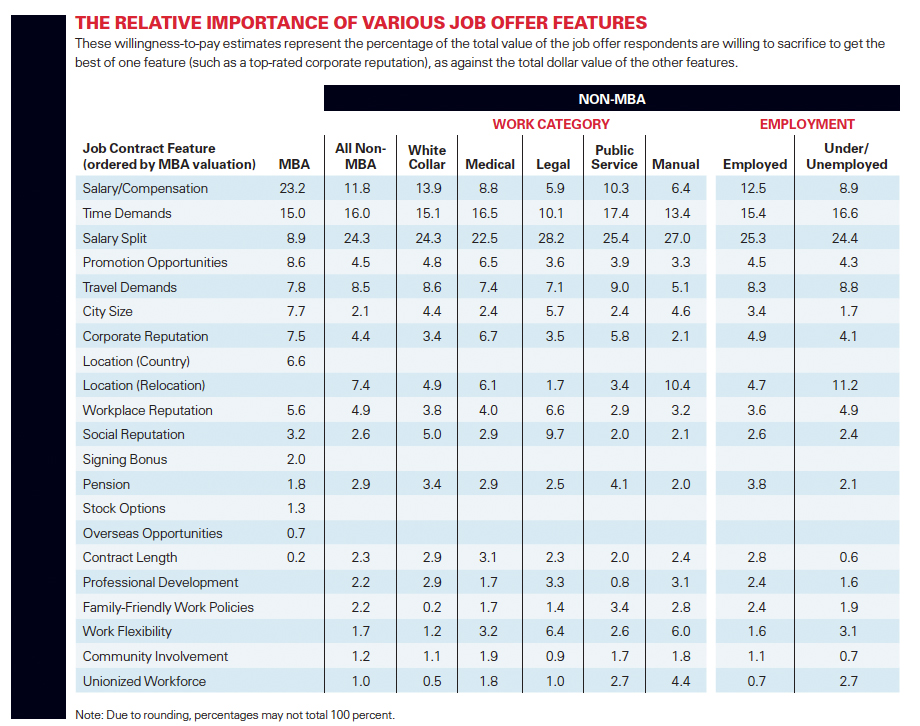
Regarding the importance of reputation, we found that:
- For MBAs, corporate reputation accounts for 7.5% of the value of the job contracts on offer, workplace reputation 5.6% and social reputation 3.2%. In total, reputation accounts for 16.3% of the value of the contract. When considered in terms of the average fixed salary contained in the various hypothetical job offers, this amounts to a value, in Australian dollars, of $12,388 for corporate reputation, $9,249 for workplace reputation and $5,286 for social reputation. (At the time the research was conducted, the Australian dollar was roughly equivalent in value to the U.S. dollar, so the amounts in U.S. dollars would be similar.) Together these are not insignificant factors.
- For the non-MBA workers who are employed, reputation has less importance; for them, all three components of reputation in total represent 11.1% of the value of the contract. Corporate reputation accounts for 4.9% of the total value of the contracts on offer, workplace reputation 3.6% and social reputation 2.6%. For these workers, whose average salary in the hypothetical job offers was substantially lower than the MBAs’ average salary, this amounts to a dollar value of $3,115 for corporate reputation, $2,288 for workplace reputation and $1,653 for social reputation — for a total value of $7,056 for the three reputation components.
- For the under/unemployed workers, reputation has a total importance of 11.4% of the value of the contract. Workplace reputation is the most important, accounting for 4.9%, then corporate reputation at 4.1%, and finally social reputation at 2.4%. For these workers, the dollar estimates are lower than for the other white-collar workers because they are based on lower expectations of salary or a lower salary in their last position. For these workers, corporate reputation is valued at $1,859, workplace reputation at $2,222 and social reputation at $1,088 — for a total value of $5,169 for the three reputation components.
- Of the different job category breakdowns, those in the legal profession value the combined components of reputation most (at 19.8% of the total value of the job offer) followed by medical workers (13.6%), white-collar workers (12.2%), government/public-service workers (10.7%) and manual workers (7.4%). Medical and public-sector workers value corporate reputation significantly more than other types of workers (6.7% and 5.8%, respectively) while legal workers put the most emphasis on workplace and social reputation (6.6% and 9.7%, respectively).
Our research suggests that, to attract talented MBA employees, companies should focus on creating good job offers designed first and foremost around compensation and time demands.
Notwithstanding the relative position of reputation, a second analysis we conducted of our data indicated that being certified by an external ratings agency can have a tie-breaking role in employee job contract choice. We found that generally, most of the impact of reputation is found at the extremes: Individuals are influenced positively by a very good reputation and negatively by a bad reputation. However, the effects were much stronger for the corporate and workplace reputations than for social reputation. In the case of workplace reputation, the effects of certification are mixed. Here, simply being known locally as a good employer is often enough to induce contract choice, all other things being equal. The big exception was manual workers: the effect of reputation for manual workers was small enough that it had no significant influence across most of the reputation levels we measured or for any of the reputation dimensions.
The Role of Reputation in the War for Talent
From a managerial perspective a number of implications arise from our findings. First, for potential employers of MBA and EMBA students, neither a corporate reputation for social responsibility nor a reputation as a good place to work is as important as those facets of the job contract that are more directly material to their careers — salary, compensation structure, time demands and promotion opportunities. These talented employees want to work for good employers, but their employers do not have to be leaders in corporate social responsibility. For these individuals it is more about “show us a career” and “give us a return on our education investment.” Thus, at this level, employers could misallocate their resources if they invested in creating a better corporate social reputation primarily because they believed it would give them much of an edge in the war for managerial talent. Our research suggests that, to attract talented MBA employees, companies should focus on creating good job offers designed first and foremost around compensation and time demands. Then, and only then, differentiate the organization on reputation.
Second, when we look across job categories we see a degree of heterogeneity that implies that overly simplistic prescriptions that do not account for the demands of workers in different professions could lead managers astray. Most clearly, manual workers appear to be less concerned about all three aspects of reputation, while those in the legal profession are clearly paying attention to the social and workplace dimensions of reputation. MBAs and medical workers give more consideration to corporate reputation and much less to social reputation. When it comes to reputation and the war for talent, there is every indication it is not a case of one size fits all.
For many corporations, it may make little sense to seek out a stellar reputation for corporate social responsibility with the ratings agencies just in the hope of attracting talented employees.
Is How You Ask People What Really Matters?
A skeptical reader might ask if our conclusions depend on our methodology. The answer is yes — but for a good reason. Yes, the results require participants to make choices, which is more cognitively complex than answering a simple survey — and hence this may influence the nature of the choices they make. But our method is closer to what individuals do when making important and complex decisions. In this regard, we believe it is overly simplistic survey approaches that are biasing results, in that they are unlikely to induce the level of cognitive effort that deciding on a job contract would require.
To show how this matters, we used the type of questioning technique often used in surveys by consultants. We asked our participants a battery of questions taken from well-established surveys used elsewhere. Their task was to tell us what aspects of the employer or the job they “valued” based upon a number of 5-point Likert scales that varied from “absolutely critical” (5) through “relevant” (3) and down to “completely irrelevant” (1).
What we found is that nearly every characteristic of the company and the job is relevant or very relevant to the individual’s choice of job or company. (See “Survey Responses About Company and Job Characteristics.”) The mean responses were 3.48 for MBAs and 3.52 for non-MBAs across the 13 company characteristic questions, and 3.80 for MBAs and 3.63 for non-MBAs across the 15 job characteristics questions, with no material difference across job category groups. With the exception of two company characteristic questions — “Emphasis on community and inclusion” and “Opinions of others” — all the groups viewed every company characteristic mentioned as at least “relevant to their decision to choose a job or employing company.” In the case of the job characteristics, again only two questions fall into the marginally relevant range in all the groups — “Opportunity to work or travel in a foreign country,” and “Stock option or ownership program.” Everything else appears to matter.
Survey Responses About Company and Job Characteristics
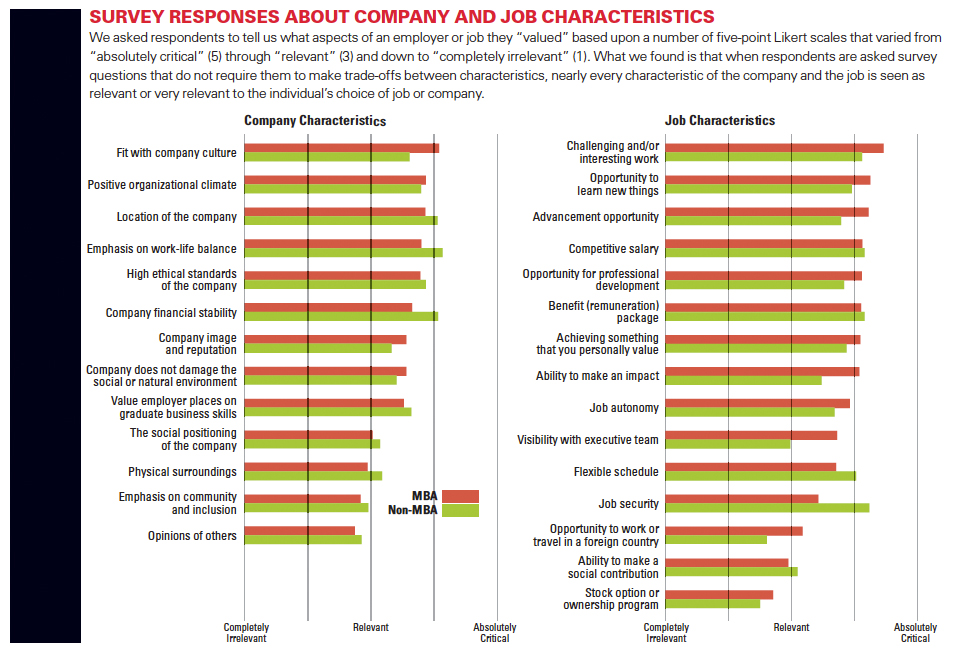
However, when we impose a cognitive cost on the respondent by making them assess each job offer across all its key features simultaneously, and then choose one, we get a clearer picture of what is manifestly important and what is more marginally so. Which set of results appeals to you depends on whether you think that a choice-based task is better than a simple ratings task in eliciting from people what really matters to them when they actually have to make a choice. We suggest that when faced with the task of designing job offers on the basis of our study or various survey results, HR managers are likely to come up with quite different types of offers.
Winning the War for Talent: Go Back to Basics
We began our discussion with a breathless press release about how a reputation for “doing good” mattered in the war for talent. The results of our research suggest that an offer based on fundamental job features like remuneration, time demands and salary certainty will stand a better chance of being favorably evaluated by potential employees in MBA programs than one relying on corporate social reputation. Indeed, for many corporations, it may make little sense to seek out a stellar reputation for corporate social responsibility with the ratings agencies just in the hope of attracting talented employees. Having a “good enough” reputation for social responsibility may be sufficient to play effectively in the war for talent.
This finding will not sit well with those promoting the importance of corporate social responsibility as a critical factor in an individual’s career choices. However, what is important about our findings is that they are the result of a more rigorous examination of preferences and they are based upon different samples of individuals. In this, our work should help organizations focus on what really matters to talented employees and avoid overinvestment in features of reputation that should more naturally follow from how they provide functional value to their employees. This recommendation is not inconsistent with other work in the social responsibility and reputation literature.10 Invariably, opinion poll style surveys and qualitative case studies significantly overstate the importance of social reputation as a signal of an organization’s standing. So while companies might choose to invest directly in CSR for many reasons, the value of that investment from the standpoint of attracting talent should not be exaggerated.
References (13)
1. E. Michaels, H. Handfield-Jones and B. Axelrod, “The War for Talent” (Boston: Harvard Business School Press, 2001).
2. See for example, D.B. Turban and D. W. Greening, “Corporate Social Performance and Organizational Attractiveness to Prospective Employees,” Academy of Management Journal 40 no. 3 (June 1997): 658-672; H.S. Albinger and S.J. Freeman, “Corporate Social Performance and Attractiveness as an Employer to Different Job Seeking Populations,” Journal of Business Ethics 28, no. 3 (Dec. 2000, part 1): 243-253; D.W. Greening and D.B. Turban, “Corporate Social Performance as a Competitive Advantage in Attracting a Quality Workforce,” Business & Society 39, no. 3 (September 2000): 254-280; D.B. Turban and D.M. Cable, “Firm Reputation and Applicant Pool Characteristics,” Journal of Organizational Behavior 24, no. 6 (September 2003): 733-751; S. Brammer, A. Millington and B. Rayton, “The Contribution of Corporate Social Responsibility to Organizational Commitment,” International Journal of Human Resource Management 18, no. 10 (October 2007): 1701-1719; S. Sen, C.B. Bhattacharya and D. Korschun, “The Role of Corporate Social Responsibility in Strengthening Multiple Stakeholder Relationships: A Field Experiment,” Journal of the Academy of Marketing Science 34, no. 2 (spring 2006): 158-166.


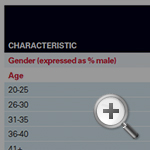 View Exhibit
View Exhibit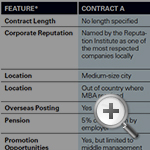 View Exhibit
View Exhibit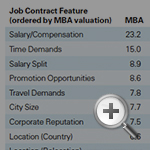 View Exhibit
View Exhibit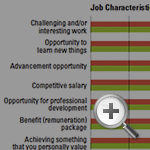 View Exhibit
View Exhibit



Comment (1)
Christine Kinch